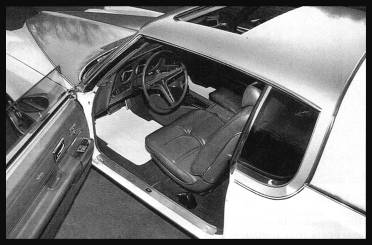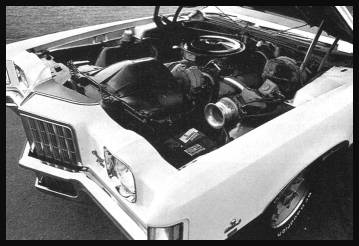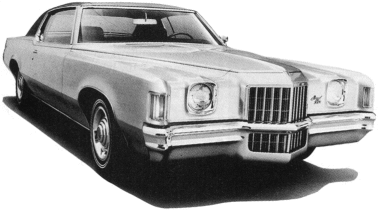The Hurst SSJ Grand Prix



Telling the difference between a standard 1972 Grand Prix (above) and an SSJ Hurst car (top
and middle) is easy, with the special Fire Frost Gold-over-white (or black) paint scheme and many other extras. Clifford Hawksley of Plymouth,
Conn., owns this rare 1972 model, and the fop photo shows few changes over the standard car, except for the Hurst electric sunroof and the
padded Cordova half-vinyl top. Prominent under the hood is the air horn for the alarm system, an original $69.95 list option for the SSJ
Hurst. | |
ontiac's association with Hurst Performance Research Corp. goes back to 1961, when Hurst shifters were offered as a standard replacement part for PMD's heavy-duty 3-speed gearbox. As the years went by, Hurst wheels and shifters were featured on many new Pontiacs, and Grand Prixs were no exception.
Although Hurst Special Edition conversions are almost invariably associated with Oldsmobile 4-4-2s, a total of 489 Pontiac Grand Prixs were also converted by Hurst during the 1970-72 model years.
The conversion process began with the shipment of black or white Grand Prixs to Hurst for the SSJ conversion. A padded Cordova landau-style half-top was added, as was a Hurst sunroof. Firefrost Gold was applied as a secondary color to the Rally II wheels and the "ironing board" section of the hood, and was carried over to the metal portion of the roof. Custom hand-pinstriping rounded out the exterior.
The interior was not neglected, either. Aside from the obligatory Hurst shifter, one would receive (depending on year and seats ordered) Hurst Roll Control, Honeycomb or American Racing wheels, and Hurst SSJ digital computer for calculating ET and MPH for a given distance.
Unfortunately, the SSJ never received a lot of promotion. Many dealers were unaware of its existence, or at least how to order it, even though the paperwork was easily obtainable. For this reason, the production totals were 272 units in 1970, 157 in 1971, and a mere 60 in 1972. — D. K.
NEXT >
|
AUGUST 1990
|